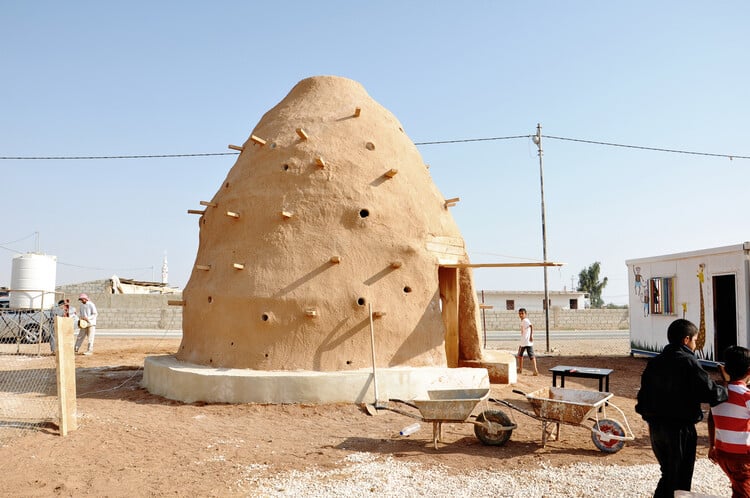AI and Traditional Architecture in the Digital Age
As artificial intelligence (AI) becomes increasingly integrated into various fields, it’s essential to question its ability to understand and interpret traditional architectural practices—especially those rooted in local cultures. AI systems rely primarily on digital data, but vernacular architecture depends on knowledge accumulated over generations, often passed down orally or through direct experience.
So, can data alone capture the essence of traditional architecture? Or is there a gap that only human interaction can fill?
1. Vernacular Architecture: Wisdom Beyond Numbers
A. What is Vernacular Architecture?
Vernacular architecture refers to traditional building methods that evolved organically in response to local environments, available materials, and community needs. It is characterized by:
- Use of local materials (e.g., clay, straw, stone).
- Climate adaptation (natural cooling designs in hot regions, thermal insulation in cold areas).
- Collective knowledge passed down through generations without written documentation.
B. Challenges of Digitizing Vernacular Architecture
While AI can analyze images and 3D models of vernacular structures, it struggles to comprehend:
- Cultural and spiritual context behind certain designs (e.g., symbolism in religious architecture).
- Manual techniques that rely on artisans’ expertise.
- Dynamic adaptation to environmental and social changes.
Example: The Great Mosque of Djenné in Mali—built with mud using traditional techniques that adapt to annual floods. Can AI truly understand why these materials were chosen without historical and climatic context?

2. AI and Architecture: Possibilities and Limitations
A. How Can AI Help?
- Analyzing Architectural Data:
- Identifying recurring design patterns in traditional architecture.
- Simulating material behavior under different climatic conditions.
- Digital Documentation:
- Using 3D laser scanning (LIDAR) to create digital archives of heritage buildings.
- Applying photogrammetry to reconstruct architectural details with precision.
- Digital Fabrication:
- 3D printing with local materials (e.g., recycled clay).
B. AI’s Limitations in Understanding Traditional Architecture
- Lack of “Contextual Intelligence”: AI doesn’t grasp the spiritual or social meanings behind designs.
- Dependence on Existing Data: If a technique isn’t digitally documented, AI can’t learn it.
- Inability to Innovate Organically: Vernacular architecture evolves continuously, while AI relies on past patterns.
Example: The floating villages of Iraq (Ma’dan)—built on centuries of experience coexisting with aquatic environments. Can AI design something similar without understanding the community-place relationship?

3. Bridging Technology and Tradition: Pathways for Integration
A. Using Technology to Preserve Architectural Heritage
- Creating digital libraries of vernacular architecture (e.g., UNESCO’s Intangible Cultural Heritage project).
- Incorporating local knowledge into AI algorithms by collaborating with traditional craftsmen and architects.
B. AI as a Support Tool, Not a Replacement
- Assisting architects in analyzing the efficiency of traditional materials in modern designs.
- Improving construction techniques without neglecting cultural aspects (e.g., using tech-enhanced straw for roofing).
C. Inspiring Case Studies
- 3D-Printed Clay Construction (Spain’s “Tova” project).
- Digital Modeling of African Villages for heritage preservation.


4. AI and Traditional Architecture—A Necessary Partnership
Ultimately, data alone isn’t enough to understand vernacular architecture, but it can be a powerful tool when combined with human wisdom. The future lies in:
- Merging machine intelligence with human insight.
- Using technology to preserve heritage, not replace it.
- Ensuring AI serves as a partner in sustainable design, not a dominator.
“Architecture is not just buildings—it’s the story of a community and its environment. AI should be the narrator of this story, not the author.”
Catch up on the latest projects, trends, and bold ideas in the world of “architectural” content on ArchUp.







